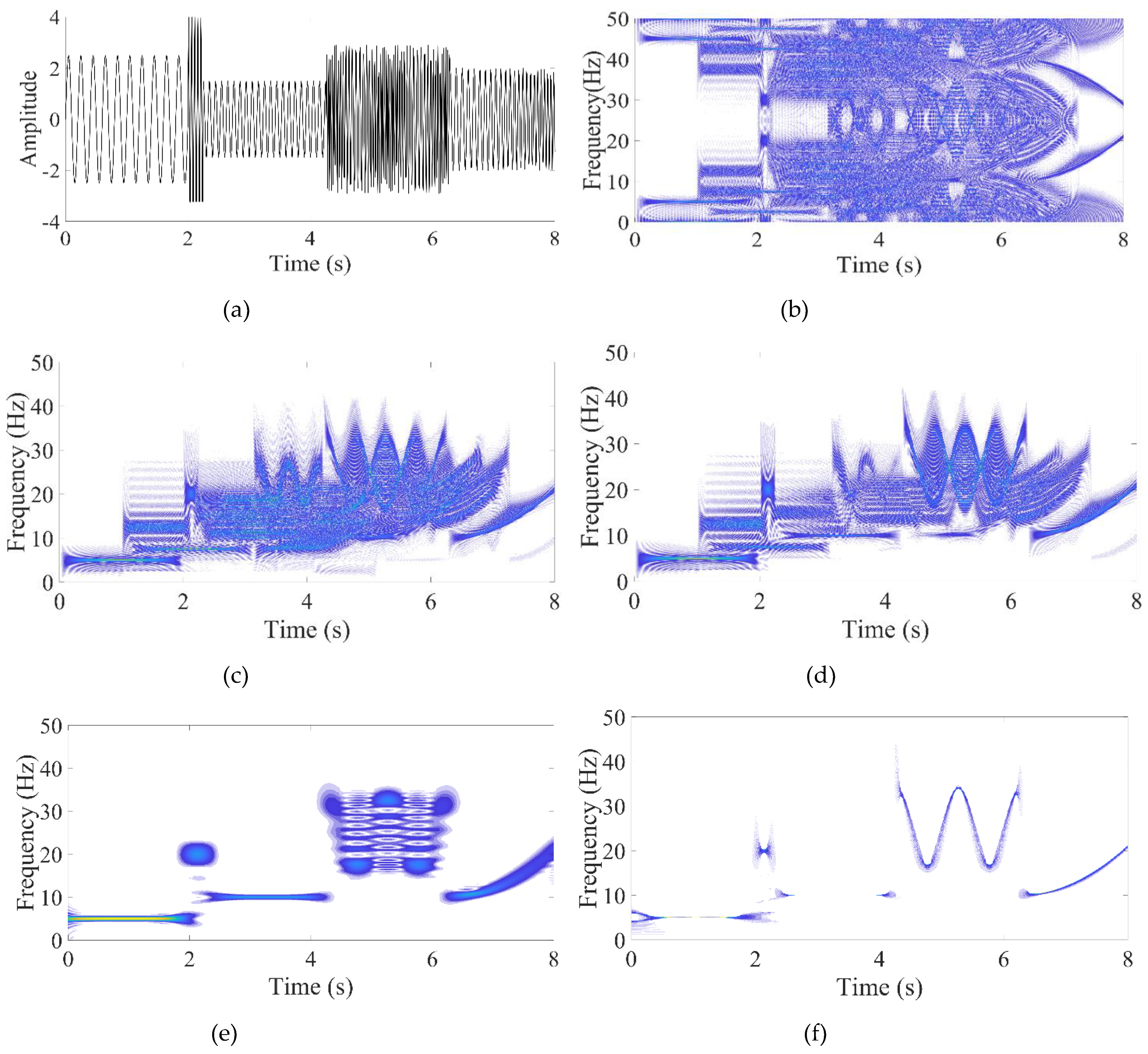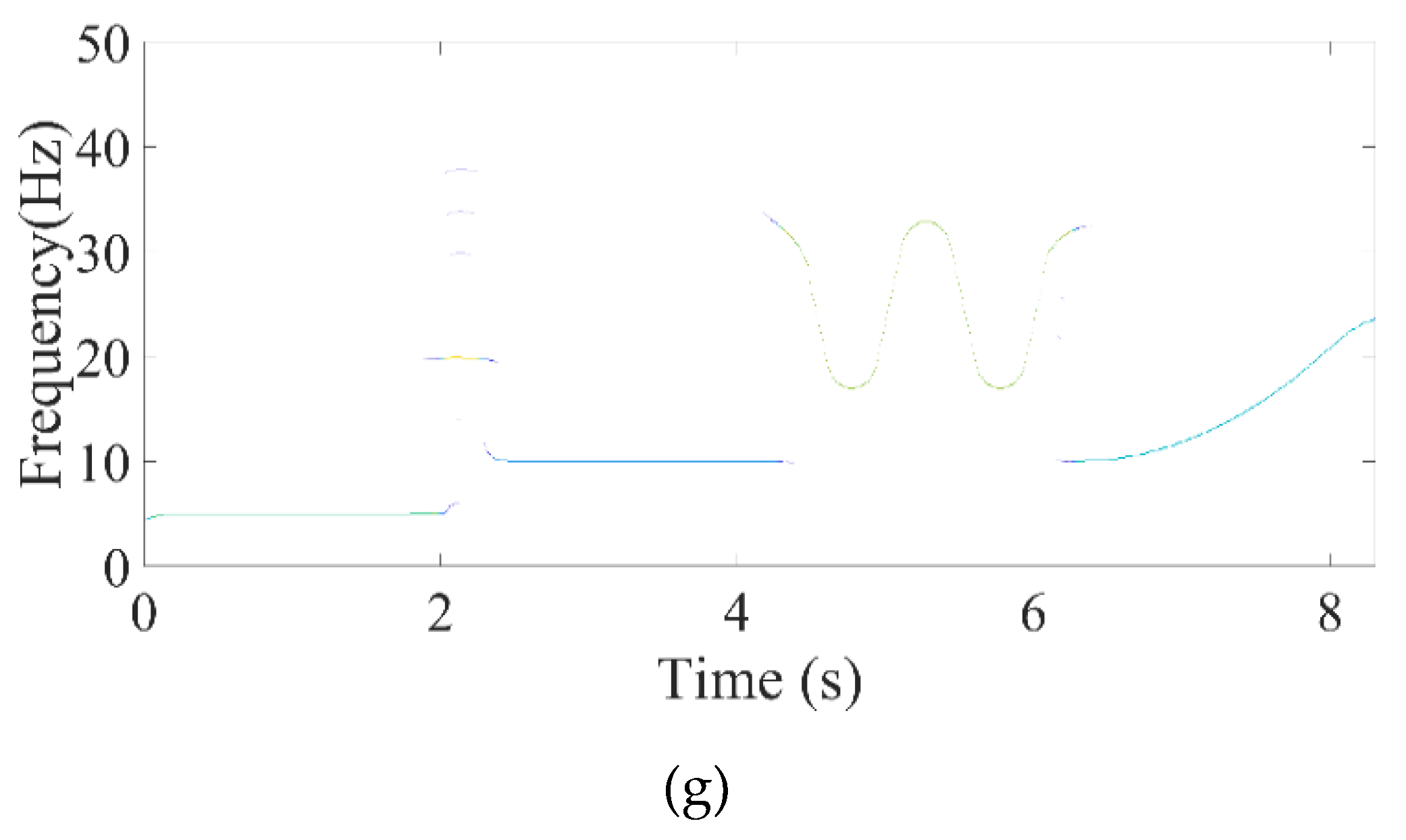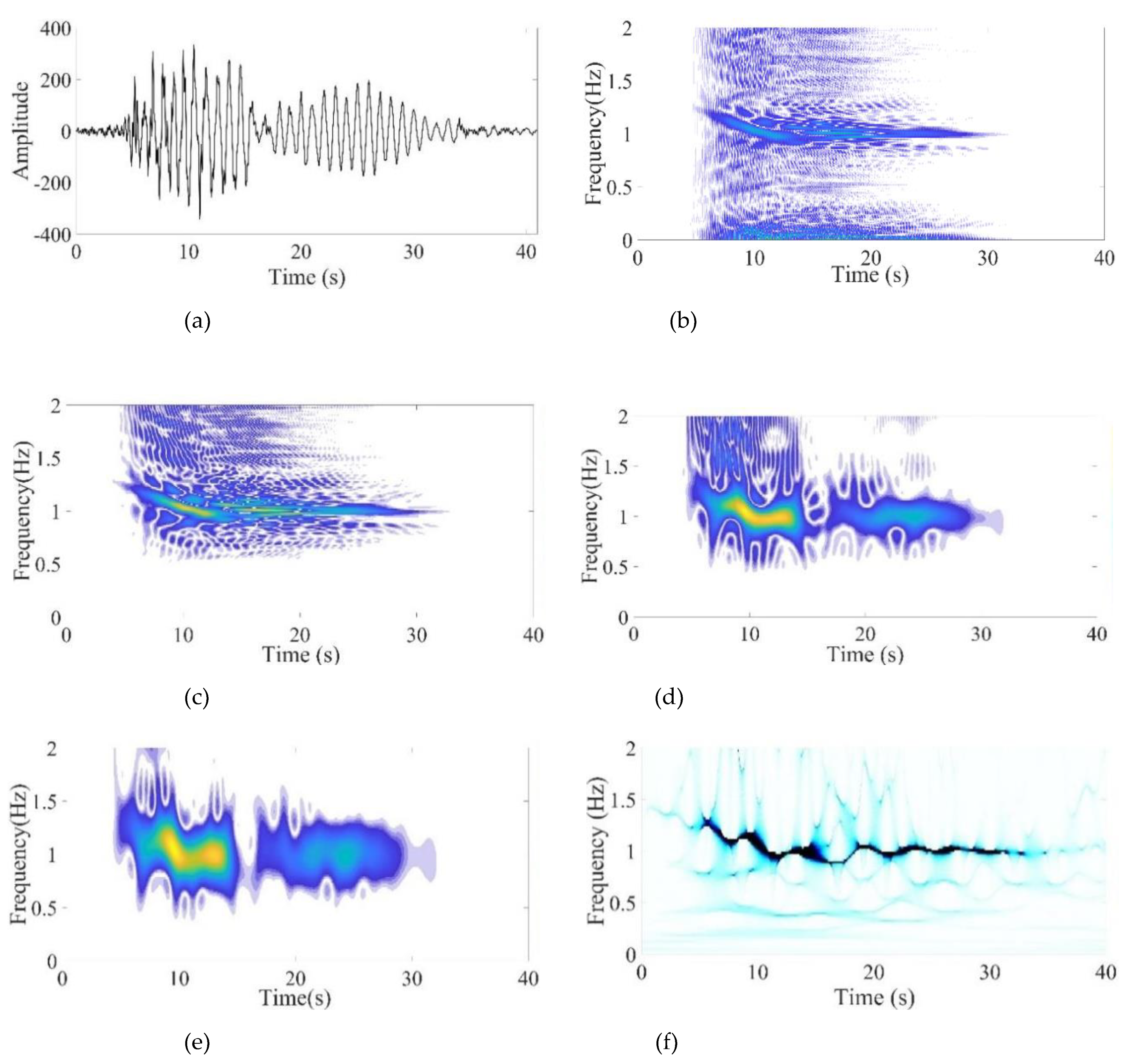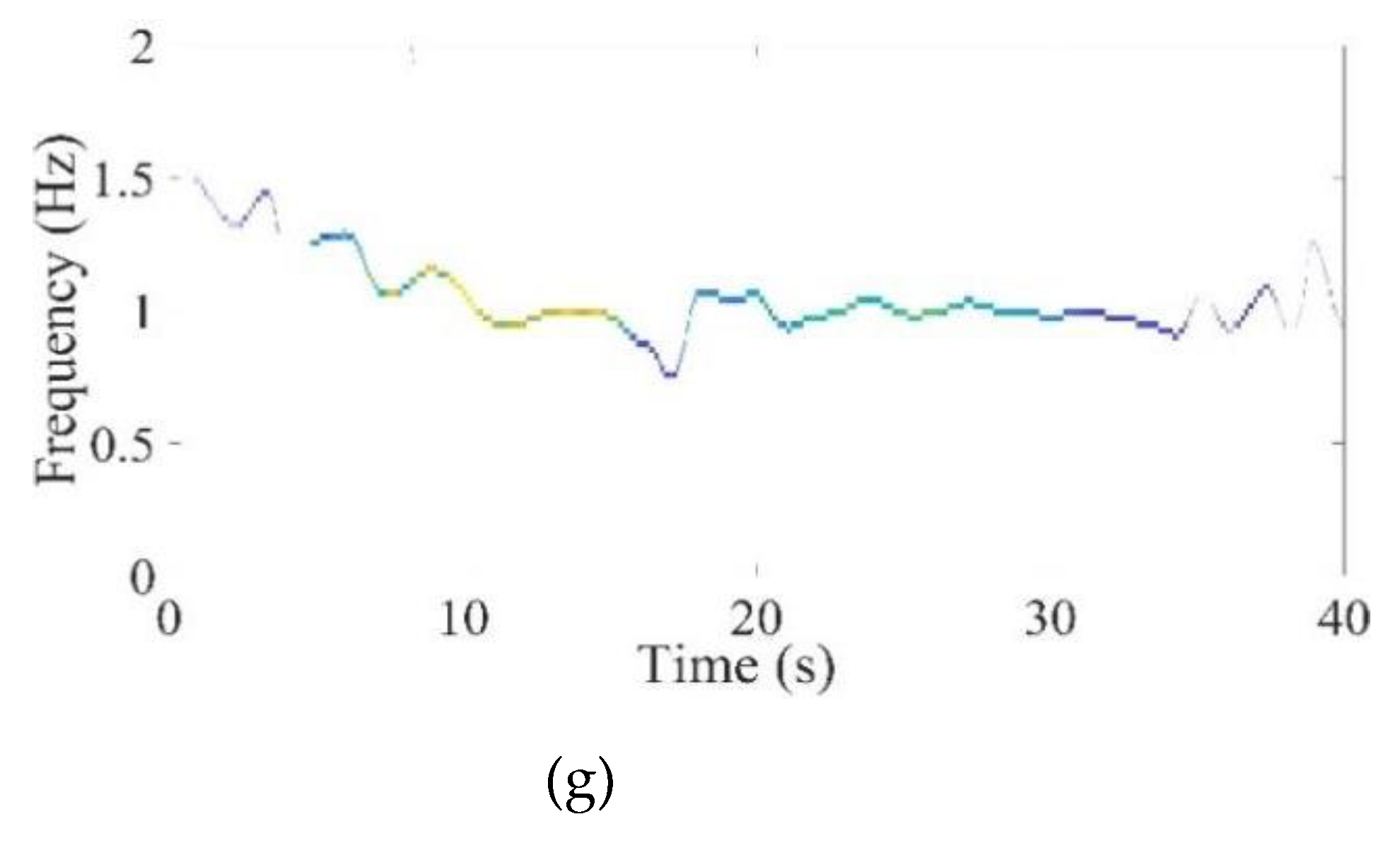In recent decades the number of multi-story buildings has exponentially increased due to the urbanization and availability of modern technology and construction material. Post-earthquake damage assessment of buildings is necessary for seismic risk mitigation and resilience planning [
1]. With recent progress in signal processing and sensor technology, damage detection using data collected from the sensors attached to buildings is becoming very popular in structural health monitoring (SHM)[
2,
3]. Modal parameters such as damping ratio, mode shape, and natural frequency are the key concepts to assess the dynamic characteristics of a building. When a structural system changes in mass, stiffness, or structural damping, the values of the parameters tend to vary. This approach can identify the damaged state of the structure [
4]. Recently, many researchers have employed time history analysis and Fourier transform (FT) for damage detection. The shifting of a structure’s frequency components during an earthquake may be caused by nonlinearities such as the surrounding environment, degree of excitement, and earthquake ground motion. If the frequency fluctuation ceases after the earthquake and returns to the pre-event frequency of the building (i.e., the natural frequency of the building), there is no structural damage. However, if there is permanent structural damage then the natural frequency of the building changes permanently[
5]. Damage identification and real-time health monitoring can be done by comparing the pre-event and post-event frequencies of the building [
6]. For this purpose, a joint time-frequency (TF) method is required as this method provides the time and frequency information of a signal simultaneously. Black (1996) [
7] applied a short-time Fourier transform (STFT) on the data collected from the Sheraton Universal hotel located in Los Angeles, USA to identify the damage. The study demonstrated that the natural frequency of the building remained stationary even after the earthquake, hence it was concluded that there was no damage in the building. The damage to the buildings has also been identified using Wigner-Ville distribution (WVD). The presence of cross-terms in WVD hinders the interpretations and creates a significant barrier to understanding the response of the building. To overcome this drawback extended versions of the WVD, such as pseudo-Wigner-Ville distribution (PWVD), smoothed pseudo-Wigner-Ville distribution (SPWVD), and reassigned smoothed pseudo-Wigner-Ville distribution (RSPWVD), were employed for damage detection and other signal processing applications [
8,
9,
10,
11]. Similarly, various TF methods, like STFT, S-transform (ST), and local time-frequency transform (LTFT) were also employed for damage detection [
12]. It was reported that the TF method with less cross-term interference and the least Renyi entropy is suitable for damage detection. Similarly, the performance of the Gabor-Wigner transform (GWT), S-transform, Synchrosqueezing transform (SST), and other time-frequency methods were compared in [
13]. It was concluded that the SST is the best among all. However, SST suffers from a smearing problem and is not capable of capturing the pre-event and post-event frequency of the structure.
During the seismic event, the amplitude of the signal captured by the sensors is relatively high due to external excitation (i.e., an earthquake). The inertia of the building may prevent a sudden decline in the magnitude of the post-event signal following an earthquake. A certain amount of time must pass before the structure settles and reaches a stable state. In post-earthquake damage detection, the primary goal is to analyze the building’s fundamental frequency during this stable state, both before and after seismic events. In both cases, the amplitude of the signal captured by the sensors is relatively low; with traditional TF methods, it is challenging to deal with low-amplitude signals [
14]. In this regard, the local maximum synchrosqueezing transform (LMSST) stands out as a highly sensitive method for detecting amplitude-weak modes [
14], making it a suitable choice for post-earthquake damage detection.
In this research work LMSST is employed for damage detection. The usefulness of LMSST is demonstrated using multi-component synthetic signals and various real earthquake data. Through visual representation and qualitative measures, it is observed that LMSST has better TF resolution and can detect post and pre-event frequency of the structure, which plays a very critical role in structural health monitoring. The amount of permanent shift in the natural frequency of the building after any seismic event determines the health of the building[
3,
6,
11]. This research work is organized in the following manner, in section 2 various TF methods are discussed, followed by a discussion on Rényi entropy and result and analysis in sections 3 and 4 respectively. The paper is concluded in section 5.

















